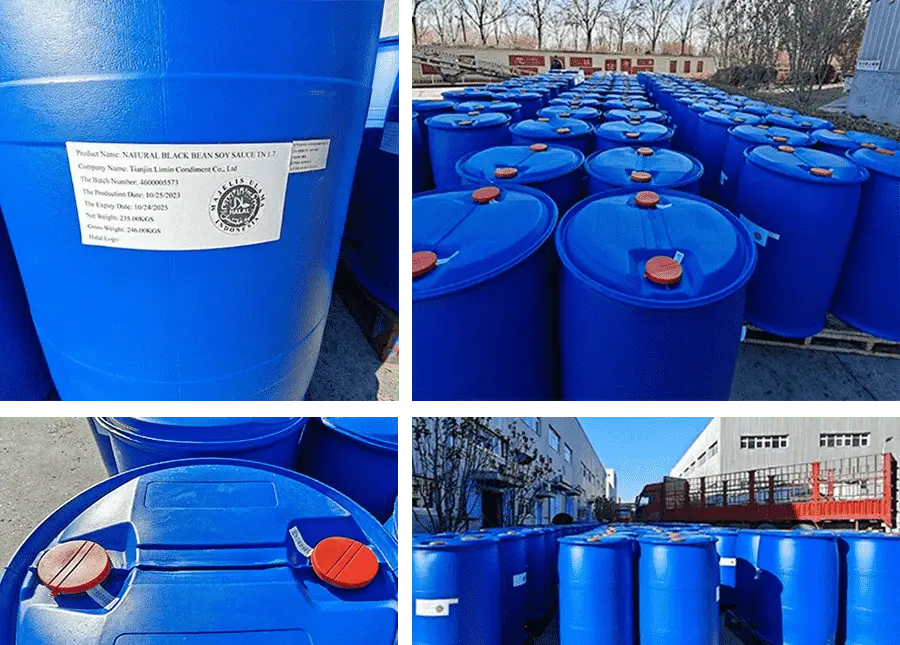在全球各地的厨房里, 酱油和其他亚洲调味品是为膳食注入丰富营养不可缺少的。, 分层口味. Whether you’re a newcomer to Asian cuisine or an experienced chef seeking to hone your skills, grasping the nuances of these sauces can significantly enhance your cooking repertoire. This guide delves into the essentials of soy sauce and introduces other key Asian sauces, offering insights on selecting the appropriate products and understanding their distinctions.
了解酱油
Soy sauce is a fermented condiment originating from China, crafted from soybeans, 小麦, 水, 和盐. Over millennia, this savory, umami-rich liquid has evolved into a versatile ingredient in various Asian culinary traditions. 今天, 大豆 大豆 柳 remains a kitchen staple, indispensable for marinating, 浸渍, 炒, or seasoning dishes.

Light Soy Sauce Versus Dark Soy Sauce
When exploring the Grocery & Gourmet Food aisle, you’ll encounter two primary types of soy sauce: light and dark. Each variety brings its own set of attributes:
- 生抽: Characterized by a pale brown hue and thinner consistency, it boasts a salty and sharp flavor that accentuates the natural taste of ingredients. 腌泡汁的理想选择, 蘸酱, and recipes requiring a delicate touch.
- 老抽: Known for its darker, 较厚, and slightly syrupy texture, it offers a milder saltiness with hints of sweetness and richness. It’s perfect for braising, 炖菜, and dishes where deeper color and caramel-like notes are desired.
The interplay between light soy sauce vs dark can create a harmonious balance of flavor and appearance in many dishes.
The Merits of Soybean Soy Sauce
Opting for soybean soy sauce, which is primarily derived from fermented soybeans, presents a healthier alternative to chemically processed options. Naturally brewed soybean soy sauce not only delivers a genuine source of umami but also contains amino acids that can boost digestion. When choosing a 酱油供应商, seek out “naturally brewed” labels for a more authentic and superior product.
Exploring Other Asian Sauces
Beyond soy sauce, Asian cuisine features a plethora of sauces that introduce distinctive flavors:
- Oyster Sauce: 厚, savory-sweet sauce made from oyster extracts, excellent for stir-fries and glazing.
- Hoisin Sauce: A sweet and tangy blend of fermented soybeans, 糖, 和香料, suitable for barbecues and as a spring roll dip.
- Fish Sauce: An intensely salty condiment from fermented fish, integral to Thai and Vietnamese dishes like soups, curries, and salads.
- 辣椒酱: A fiery mixture of chili peppers, 蒜, 和醋, adding heat and zest to any dish.
- Sesame Oil: Although not a sauce, sesame oil imparts a nutty aroma and flavor, making it a vital seasoning in Asian cooking.
Selecting Quality Asian Sauces
To ensure you pick the best soy sauce supplier and other Asian sauces, consider the following:
- Choose naturally brewed sauces for richer, more complex flavors.
- Review the ingredients list to avoid artificial additives and excess salt.
- Trust reputable brands known for delivering consistent quality.
- Experiment with different varieties to find those that best suit your culinary preferences.
Preserving Your Sauces
For optimal longevity of your sauces:
- Store them in a cool, dark area such as a pantry.
- Refrigerate after opening to preserve freshness.
- Adhere to expiration dates to maintain flavor integrity.
In conclusion, soy sauce and other Asian condiments are fundamental to achieving depth and authenticity in cooking. By comprehending the roles of light soy sauce vs dark, embracing the benefits of soybean soy sauce, and selecting a reliable soy sauce supplier, you can elevate your culinary creations and enjoy authentic Asian-inspired meals at home. 所以, the next time you visit the store, explore the Grocery & Gourmet Food section and embrace new flavors with confidence!

